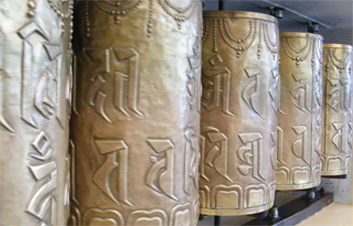
Mcleodganj: Originally the home of the semi-nomadic Gaddi tribe, Mcleodganj is today the residence of the Dalai Lama. Mcleodganj was originally developed as a British Garrison, to administer the Kangra valley; today the place has developed as headquarters of the exiled Tibetan Government. This Tibetan settlement has its own bazaar which offers all sorts of Tibetan knick-knacks, carpets, handicrafts and local food.
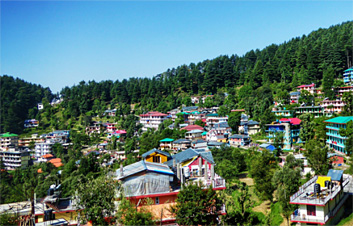
Dharamkot: On the crest of a hill above McLeodGanj, Dharamkot is a spot with wide views of the Kangra Valley and the Dhauladhar ranges.
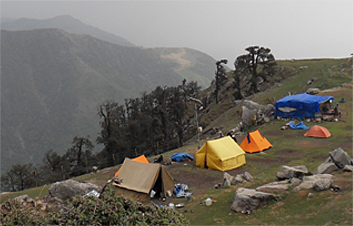
Triund: Triund is the crown jewel of dharamshala. Located at a height of 2975m, a few hours from the snow-line, this spot offers spectacular views of the valley. Dharamkot is the starting point for a day-trek to Triund, as well as more challenging ones (upto 15 days).
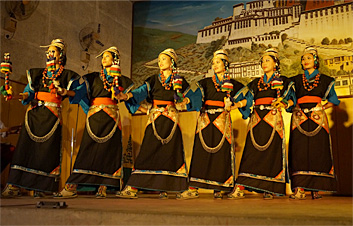
Tibetan Institute of Performing Arts (TIPA): Located about a 30 minute walk from Dharamsala, the Tibetan Institute of Performing Arts was the first institute created by the exiled Tibetan government. TIPA is both a cultural centre and a school, providing an insightful glimpse into the colorful Tibetan culture of music, dance and theatre.
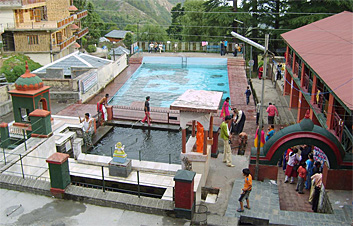
Bhagsunath: Located on the floor of the valley,two km from MacLeod ganj is the ancient temple of Bhagsunath. This temple is surrounded by numerous fresh water springs.
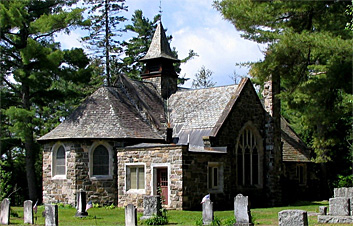
St. John in the Wilderness: A few km from MacLeod ganj, is a stone church with stained glass windows. Also at St. John is a memorial dedicated to British Viceroy, Lord Elgin who died at Dharamsala.
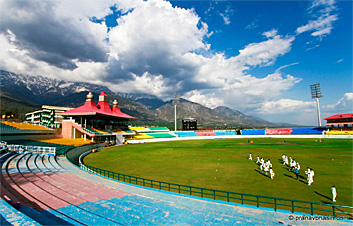
Himachal Pradesh Cricket Association Stadium: Himachal Pradesh Cricket Association Stadium, abbreviated as the HPCA Stadium, is a picturesque cricket stadium located in the city of Dharamshala. The picturesque venue is unique in India as it is situated at an altitude of 1,457 m above the sea level and has the snow-capped Himalayan mountains in the background.
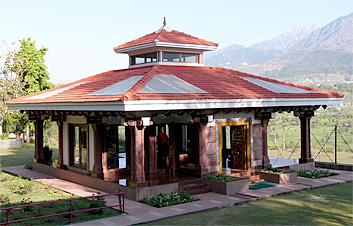
Chinmaya Tapovan Ashram: Nestled in the spectacular Dhauladhar ranges of the Himalayas is the Chinmaya Tapovan Ashram. It is, one of the main retreats of the Chinmaya Mission. It is important as a center of the Sandeepany Vedanta course, meditation camps,vedic teachings and the Chinmaya Rural Primary Health and Training Center.
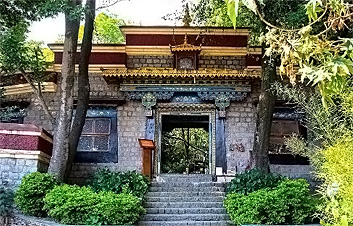
Norbulingka Institute: Norbulingka is a unique institute dedicated to the preservation of Tibetan arts and culture. Tree-shaded paths, wooden bridges, small streams tiny water falls, coupled with a Japanese influence make Norbulinka an idyllic spot.
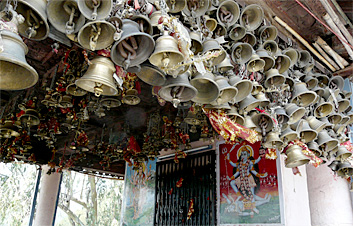
Chamunda Devi Temple: Besides being a holy spot, the journey to Chamunda Devi offers some glorious views of the mountains.
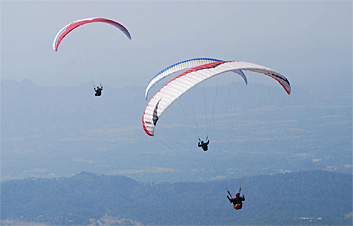
Bir Billing, near Palampur: It has arguably the finest site for hang and para-gliding in the country.
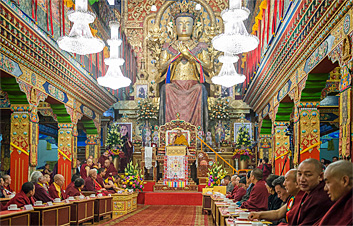
Sherabling Monastery: The most beautiful and largest monastery is 2km from the paragliding site in Bir.
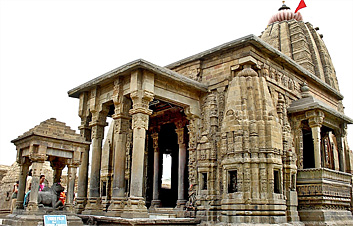
Baijnath Temples: Said to be one of the refuges of the exiled Pandavas in the epic Mahabharat, the beautiful and ancient temples are a sight worth seeing.
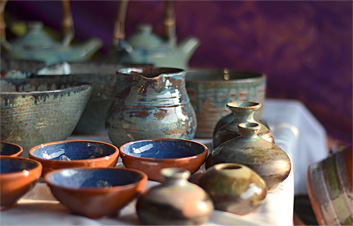
Andretta: A quaint little colony, where artists of all kinds - painters, potters & writers find their refuge & sometimes build their habitats, training centres & galleries. Shobha Singh - the famous artist has one of his art galleries here.
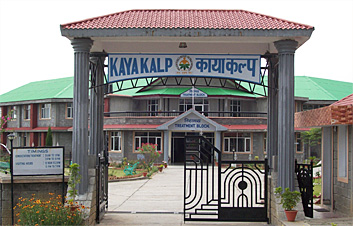
Kayakalp: Kayakalp the famous Aurvedic centre for Herbal massages, is only 20kms away.
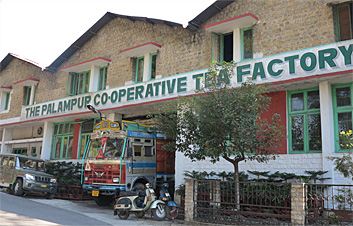
Palampur Cooperative Tea Factory: Situated on the highway just before the market, the Palampur Cooperative Tea Factory, was set up in 1952. It produces 4,000 tonnes of tea every day between April and November.
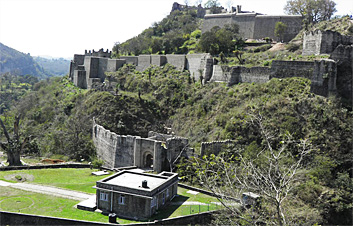
The Kangra Fort: Kangra was the ancient capital of the powerful hill state of Nagarkot. It stands witness to the ravages of conquerors from Mahmud of Ghazni to Mughal Jahangir. The town of Palampur came into being when Dr. Jameson, Superintendent, botanical Gardens, North-West Frontier Province, introduced the tea bush from Almora in 1849. The bush thrived and so did the town which became a focus of the European tea estate owners.
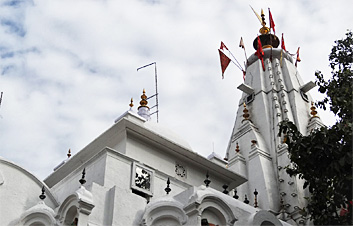
Bajreshwari Temple: Kangra is known for its legendary wealth, robbed in 1009 by Mahmud of Ghazni. Destroyed by the earthquake of 1905 it was rebuilt in 1920. Temple: Kangra is known for its legendary wealth, robbed in 1009 by Mahmud of Ghazni. Destroyed by the earthquake of 1905 it was rebuilt in 1920.
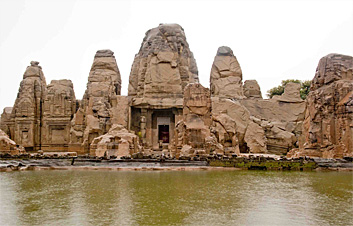
Masrur Temples: The Masrur Temples, also referred to as Masroor Temples or Rock-cut Temples at Masrur, is an early 8th-century complex of rock-cut Hindu temples in the Kangra Valley of Beas River in Himachal Pradesh, India. The temples face northeast, towards the Dhauladhar range of the Himalayas.
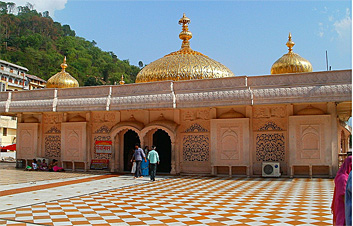
Jawalamukhi Temple: It is only 56kms from Dharamshala is the famous temple of goddess Jawalamukhi or the Flaming Goddess. It is built over some natural jets of combustible gas believed to be the manifestation of Devi Bhagwati Jawalamukhi. Mughal Akbar tried to quench the flames but failed, became a devotee thereafter.
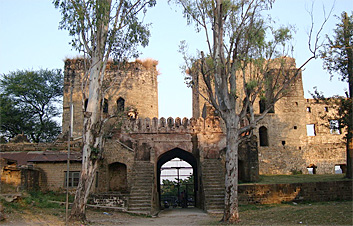
Nurpur: Named after Nur Jehan, the wife of Mughal Emperor Jehangir, Nurpur houses an ancient fort and the ruins of a Krishna temple. Traces of the Mughal era's craftsmanship can be seen in the beautiful carvings. For the interested there are forts at Kangra and Sujanpur as well.
